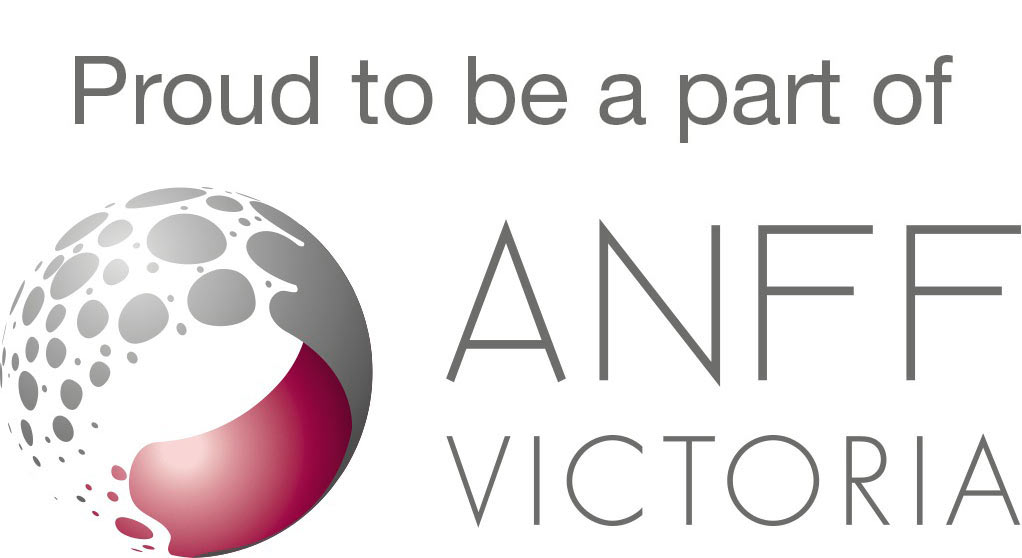Discounted MCN Residency Rates for Start-ups
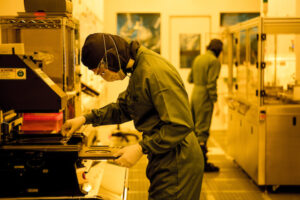
Starting May 2025, MCN is now offering discounted residency rates for start-ups.
Access rates at the MCN are subsidised for academics owing to publicly funded operational support it receives through the Federal NCRIS program. While industry users have always been asked to pay more for access than their academic counterparts, such rates can present significant financial challenges to start-up companies who are not yet able to attract funding from commercial investors.
To help lower this barrier and assist start-ups with the continued development of their devices/technologies, the MCN has introduced an application pathway for eligible start-ups to receive a 40% discount to published industry residency rates.
For eligibility criteria and how to apply, see here.
Nanofabulous Seminar: Nature inspired, microfluidic systems engineering via Shaping of fluids
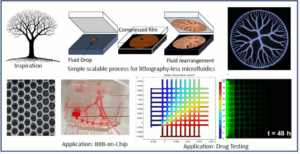
Nature has preferred to use fractal-like 3D morphology to configure some of her vital multi scale microfluidic systems such as trees, leaves, circulatory & respiratory systems in animals and so on.
Deeper investigation has recently started revealing the optimal energy and material utilisation that these morphologies offer for the desired goal.
This talk shares completely unconventional spontaneous ways and ideas, invented as our humble efforts towards mimicking some of these natural structures and demonstrates their applications. Idea is to shape a viscous fluid (a particle slurry) and retain the shape. Particularly, we employ Saffman-Taylor instability in a lifted Hele Shaw cell with ingenious modifications in the cell plates to control spontaneous evolution of the fractal-like and array structures. The result is amalgamation of art of spontaneity with the precision of engineering. In another such exploration, in pursuit of developing high-aspect-ratio structures stretched in the third dimension, we deploy a volatile polymer solution. Controlled competition between evaporation of solvent and motion of fluid interface leads to pinning of the boundary (coffee ring effect) and further stretching manifests into interesting formations with aspect ratios close to 200. A few biomedical devices are demonstrated to establish application potential.
Dr Prasanna Gandhi
Professor in Mechanical Engineering
Director of Suman Mashruwala Advanced Microengineering Laboratory
Professor-in-charge of IITB-Monash Research Academy
11:00am, 29/05/2025
Melbourne Centre for Nanofabrication
151 Wellington Road, Clayton, 3168
Zoom link: click here
Meeting ID: 861 4788 5684 passcode: 527900
Click here for more information
Nanofabulous Seminar: Advancing Confocal Super-Resolution Imaging: From STED to FSTM
Stimulated Emission Depletion (STED) super-resolution imaging typically requires high-power depletion lasers, which can cause significant sample damage and phototoxicity. To address this challenge, we developed novel strategies combining advanced optical methods and fluorescent probes to lower depletion light power while enhancing imaging performance. This enables applications in live-cell imaging and even in vivo imaging. Additionally, leveraging time-resolved detection and computational imaging techniques, we introduced a phase analysis-based spatiotemporal fluorescence modulation strategy (FSTM). This approach allows us to extract precise photon information from both temporal and spatial dimensions. Using a single-pulse laser, we can also achieve multicolor super-resolution imaging of live cells, as well as super-resolution fluorescence lifetime imaging.
Prof Junle Qu
Center for Biomedical Photonics
College of Physics and Optoelectronic Engineering
Shenzhen University, China
11:00am, 06/05/2025
Melbourne Centre for Nanofabrication
151 Wellington Road, Clayton, 3168
Zoom link: click here
Meeting ID: 872 6697 4387 passcode: 184147
Click here for more information
Nanofabulous Seminar: Approaching Angstrom Scale Resolution in Lithography Using a Universal Resist Platform

“We report on the development of a novel resist platform, i.e., YMORE2 (PSI Metal-Organic Resists for EUV and Electron beam lithographies.” With this platform, we explore the novel metal-organic resists with the aim of improving patterning resolution and reducing line width roughness while retaining sensitivity. It features metal (or metalloid) containing molecular resists with masses <500 Dalton and a highly tailorable organic environment around the central metal atom. Such a flexibility in choosing the organic environment around the central metal atom or metalloid provides a considerable amount of process latitude to adjust the sensitivity and atom economy of these resists. More importantly, the YMORE2 resist platform is a universal scheme for patterning metal / metalloid-containing functional resists compatible with both extreme ultraviolet (EUV) and electron beam lithography (EBL). Furthermore, this resist platform mechanistically unites EBL and EUVL. In my talk, I will start off with a brief historical overview of metal-containing resists and then discuss the patterning results of EUVL and EBL of selected resists and show examples of high-resolution patterning approaching angstrom-scale resolution.
Dr Mohammad S.M. Saifullah
Patterning & Lithography Lead, Eulitha AG, Switzerland;
Paul Scherrer Institut, Switzerland
11:00am, 29/04/2025
Melbourne Centre for Nanofabrication
151 Wellington Road, Clayton, 3168
Zoom link: click here
Meeting ID: 831 2015 9952 passcode: 812241
Click here for more information
Nanofabulous Seminar: Engineering biology for human and environmental health
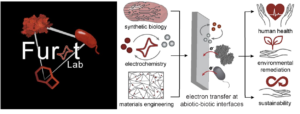
For decades, researchers have worked to replicate the efficiency of biological processes for applications ranging from carbon sequestration to resource recovery. Yet engineered methods are generally less efficient and selective than their native counterparts . We have found that the integration of nano materials with microbial engineering enables us to create novel technologies that outperform conventional cleantech We have generated an inexpensive platform for rare earth element recovery, toxic pesticide remediation, and carcinogenic pollutant degradation.
We have also improved electrochemical conversion of CO 2 to valuable products, decreasing the energy required. Also, we have developed inexpensive, point of use diagnostics for infectious disease. In all of our work, we consistently find that the combination of chemistry and biomolecular engineering affords advantages beyond the capabilities of either technology alone.
Prof Ariel L. Furst
Chemical Engineering at MIT, USA.
11:00am, 18/12/2024
Melbourne Centre for Nanofabrication
151 Wellington Road, Clayton, 3168
Zoom link: click here
Meeting ID: 846 8564 5925 passcode: 622184
Click here for more information
Nanofabulous Seminar: Nanopores: From Biosensors to Cell-Instructive Interfaces
Our research bridges physics, materials science, and biology to explore living organisms down to the molecular level. Nanomaterials are central to our work. We have developed methods to fabricate and functionalize nanomaterials, tailoring them for biomedical applications. This includes designing sensors for localized detection of ions and biomolecules, and creating cell-instructive materials that can alter cellular functions for immunotherapy applications.
In this seminar, I will present our latest research on tailoring nanomaterials for biosensing and cellular engineering applications. We will explore the creation of nanopore sensors that operate near or even inside single cells, offering real-time insights into cellular functions and processes. Next, we will discuss how cells interact with nanomaterials and how nanotopographical constraints can alter immune cell functions and gene expression patterns. By using nanoporous surfaces, we have shown that these constraints induce biomechanical signals, leading to potent activation of T and B cells. The induced formation of cellular protrusions (microvilli) inside the nanopores significantly enhances cellular uptake through macropinocytosis. This provides a novel platform for gene or drug delivery to the cells, enabling manufacturing of genetically engineered cells (CAR-T cells) for potential applications in immunotherapy.
Prof Morteza Aramesh
Institute for Biomedical Engineering, ETH Zürich.
1:00pm, 4/12/2024
Melbourne Centre for Nanofabrication
151 Wellington Road, Clayton, 3168
Zoom link: click here
Meeting ID: 856 9549 7894 passcode: 574455
Click here for more information
Nanofabulous Seminar: Machine Learning-Assisted Surface-enhanced Raman Scattering (SERS) Nanosensors for Predictive Sensing Applications
Nanomaterial-based sensors (“nanosensors”) are attractive detection tools to detect multiple disease biomarkers swiftly and at point-of-care. These nanosensors make use nanometer-sized particles with unique physical, optical, and electrical properties to induce enhanced output signals in response to the detection and/or changes in concentrations of analytes.
In this talk, I will discuss my group’s effort in using one of the nanosensors, surface-enhanced Raman scattering (SERS) nanosensors for various biomedical applications. SERS utilizes metallic nanoparticles such as Ag and Au to harness incoming light excitation, concentrate surface plasmon resonances, and boost the Raman vibrational signatures of biomarkers for ultrasensitive detection. Firstly, I will discuss various SERS platform fabrication strategies to bestow desirable chemoselectivity and increase target analyte/biomarker affinity to achieve higher detection sensitivity and selectivity.
I will also highlight various emerging research strategies which utilize machine learning algorithms for rapid on-site prediction of disease infection. Specifically, how chemometrics and machine learning algorithms can transform the assimilation and interpretation of complex spectral data in biological samples by discerning more patterns hidden within the data, to achieve high throughput data analysis, sensitivity, and disease prediction. I hope these insights can stimulate the development of innovative and hybrid detection methods across the entire analytical discipline to resolve longstanding challenges in biomarker and analyte sensing and detection.
Prof Xing Yi Ling
School of Chemistry, Chemical Engineering and Biotechnology, Nanyang Technological University,
21 Nanyang Link, Singapore.
1:30pm, 27/11/2024
Melbourne Centre for Nanofabrication
151 Wellington Road, Clayton, 3168
Zoom link: click here
Meeting ID: 822 0945 6158 passcode: 305801
Click here for more information
Park FX40 Demo Tour
You’re invited to attend an exclusive live demo of the FX40 Atomic Force Microscope during our upcoming Park FX40 Demo Tour to be held at the MCN.
Join us for an exclusive 3 day demo tour of the FX40 AFM presented by experts from Park Systems. Discover the latest advancements and techniques in this new technology and watch a live demo and participate in conducting your own experiments on the FX40.
SCHEDULE:
Park Systems Seminar – 22 Oct, 9:00 – 10:30 (MCN Boardroom)
Product Demonstrations – 22 & 23 Oct, 11:00 – 12.30 (FIB-SEM Room)
Hands-On Sessions – 22, 23, 24 Oct, various times (FIB-SEM Room)
Participate in your own experiment and see the capabilities for yourself during our ‘hands-on’ sessions (Must be registered). Run the FX40 on our standard samples or bring your own samples to experiment with, provided we have the appropriate mode to use. (Be quick to secure your spot – limited number of sessions available)
Click here for more information & to register
Nanofabulous Seminar: A new imaging modality in nanomaterials and life sciences
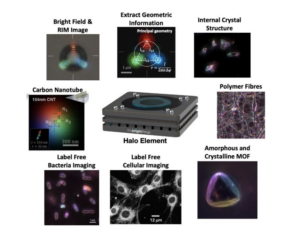
Engineered or complex particles found in nano-electronics, photonic materials, and nano-sensors, etc. have experienced a rapid growth in research interest and application over the past two decades. Similarly, the interface between nanomaterials and biology has also grown rapidly. These outcomes are in part due to improving techniques to fabricate materials and biomaterials, from both top-down and bottom-up approaches, even at scale.
The characterisation needs for such materials leans heavily on existing microscopy or metrology tools that often balance resolution against the time, expense and complexity of measurement workflows. In addition, as objects get small, the methods become more specialised.
Motivated by the need to visualize complex particles and objects in engineered materials and dynamic processes in life sciences, this talk will focus on the operating principles of Resonance Imaging Microscopy (RIM). RIM is a new imaging modality to provide simple and easy characterisation of objects with nearly any shape and composition, ranging in size from hundreds of microns to tens of nanometres. RIM is a multi-source evanescent field scattering technique that enables high-speed, non-destructive, label and stain-free imaging in real time (up to hundreds of FPS) using visible light.
For particle metrology applications, we will present both direct and statistical results validating the fidelity of geometric measurements for a selection of spherical calibration particles with radii spanning four orders of magnitude. We will showcase more complex materials including nanorods and materials with complex internal structures. In life sciences we will show results of multi-modal characterisation studies that demonstrate how RIM is able to elucidate the internal structure of, and relationship between, untagged cells and bacteria. We will showcase how RIM can be used to visualise a range of other biological materials, both static and dynamic in nature. All achieved without the need of fluorescent proteins, dyes or conjugated antibodies or risks from photobleaching when examined using traditional laser-based microscopy systems.
Prof Raymond R. Dagastine
Department of Chemical Engineering, The University of Melbourne, VIC 3010, Australia
Tiny Bright Things, Carlton Victoria 3053, Australia
11:00am, 15/08/2024
Melbourne Centre for Nanofabrication
151 Wellington Road, Clayton, 3168
Zoom link: click here
Meeting ID: 858 5837 9980 and passcode:873578
Click here for more information
MCN/ANFF-VIC New Capabilities Workshop
Following what has been a multi-year $13.7M update to MCN and ANFF-VIC instrumentation and infrastructure, we are organising a two-day event on the 23-24th July at Monash’s New Horizons Building to help raise awareness of the new capabilities and catalyse new research activity. Please save these dates and register your interest in attending using the link below.
The event is FREE and will be conducted in a hybrid (in-person/zoom) format, but there will be awesome incentives for those who attend in-person, such as free assisted sessions with process engineers on the new capabilities, delicious refreshments and the chance to chat with applications engineers and staff on the finer details of your fabrication and character needs.
New capability talks, including:
- Heidelberg MLA150 – Direct-Write Maskless Lithography
- 3D Micromac AG – Femtosecond Laser Dicing/Marking/Ablation
- Eulitha PhableR 100 – Displacement Talbot Lithography
- Witec – Confocal Raman Microscopy
- Bruker – AFM Conductivity Probing (PF-TUNA)
- Oxford, ULVAC & SAMCO – DRIE/RIE & PECVD
- Chemspeed et al – Robotic/AI Materials Discovery Glovebox
- AJA – Combinatorial Sputtering
- and many others…
For more details, visit the Evenbrite, here.
Download the Workshop Program HERE
